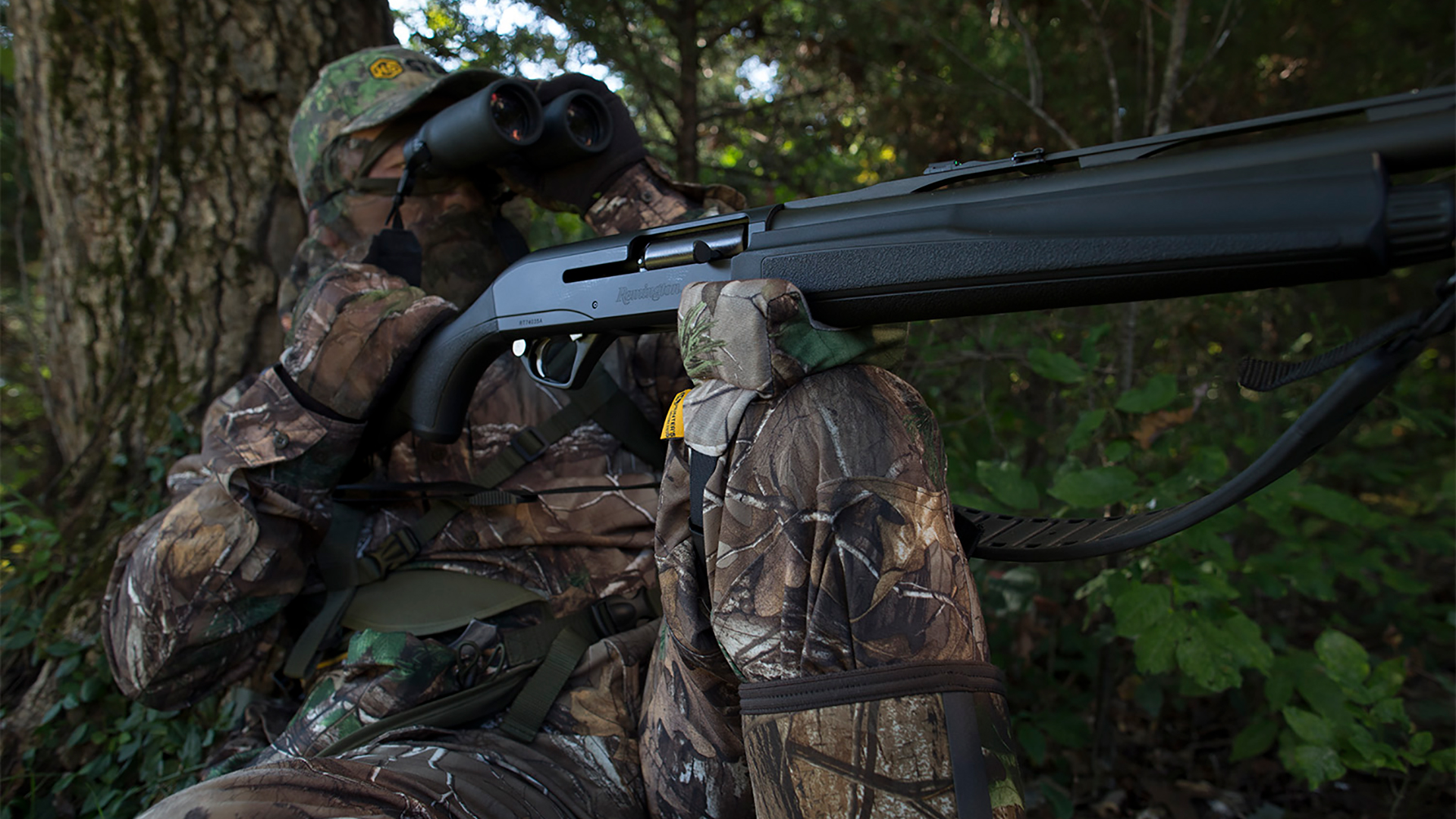The 12-gauge shotgun is the ticket for the majority of America’s turkey hunters. Ladies and kids can get by with the 20-gauge if they choose the right load and shoot at gobblers within 30 yards. If you are of the mindset “bigger is better,” and if you can handle a gun that kicks like a mule, you can go with the big 10-gauge. But you don’t really need it.
Carry a three-shot repeater, either an auto-loader or a pump. Rarely will you shoot at a tom three times—you will either miss him cleanly or drop him cleanly with your first shot or your second. But gobblers are tough, and sometimes a bird will surprise you by rolling up and trying to run or fly away. A third shot can be the difference between a dead bird and a lost bird.
Remington, Benelli, Browning and Winchester manufacture quality 12-gauge autoloaders for turkey hunting. If you’re a pump-gun man, more power to you. A shell-shucker fires just as fast as an autoloader and is less prone to jam in the woods. The aforementioned companies, along with Mossberg, offer good pumps for the game. All modern shotguns designed specifically for turkey hunting come with some sort of camo finish – typicall Realtree or Mossy Oak.

The trend toward 21 to 24 inch vent-rib barrels on turkey guns has been a grand innovation. Ballistics studies show that a shot charge fired through a short barrel does not lose significant velocity as compared to a load blown through a 26 or 28 inch tube. A short-barreled magnum offers an adequate sighting plane and wields easily around brush and saplings at your calling setups.
Gobblers are tough, and most of the time you shoot at them through some foliage in the spring so you’ll need dense shot patterns. To that end, most turkey guns come with extra-full or super-full choke tubes. In addition, many companies manufacture aftermarket turkey tubes with even tighter constrictions. You ought to experiment with a variety of chokes and loads to see which throw the densest and most consistent patterns at 20, 30 and 40 yards.
The days of silver or white beads on a shotgun barrel are gone. Good riddance, because they were difficult to align on a gobbler’s head and neck, especially early in the morning and when a bird was more than 30 yards away. Today, fiber-optic sights are the rage. The orange, green or yellow beads are easy to see and pin on a turkey in both low-light and bright-light conditions. Fiber-optic sights, front and rear, come standard on new turkey guns, or you can easily install them on your old magnum.
Some hunters mount low-power scopes on their magnums. The benefits: A crosshair is easy to pin on a gobbler’s neck, and if your gun is sighted-in properly, your shot pattern will fly true every time. Also, older hunters whose eyes are not quite as sharp as they used to be can see and kill birds easier.
One drawback: A scope limits your field of view a bit, which sometimes makes it tough to pick up an incoming tom. But set the optic to low power with a wide view, and with practice you should have no trouble picking up birds.
You might want to try a scope, especially if you’re having trouble getting shot patterns to fly true, or if you missed more than one turkey last season. Many optics manufacturers, including Nikon and Bushnell, market good scopes for turkey guns.